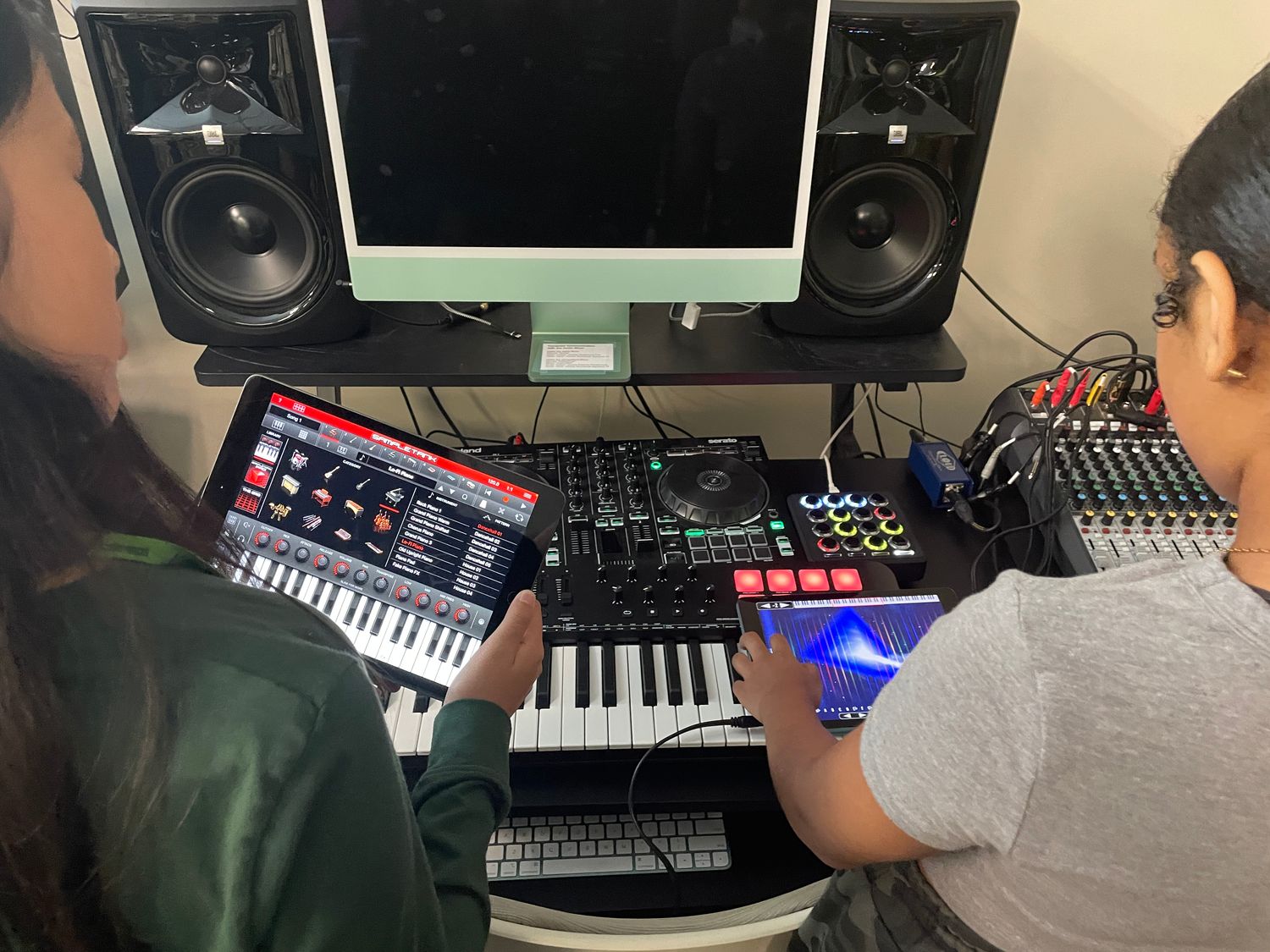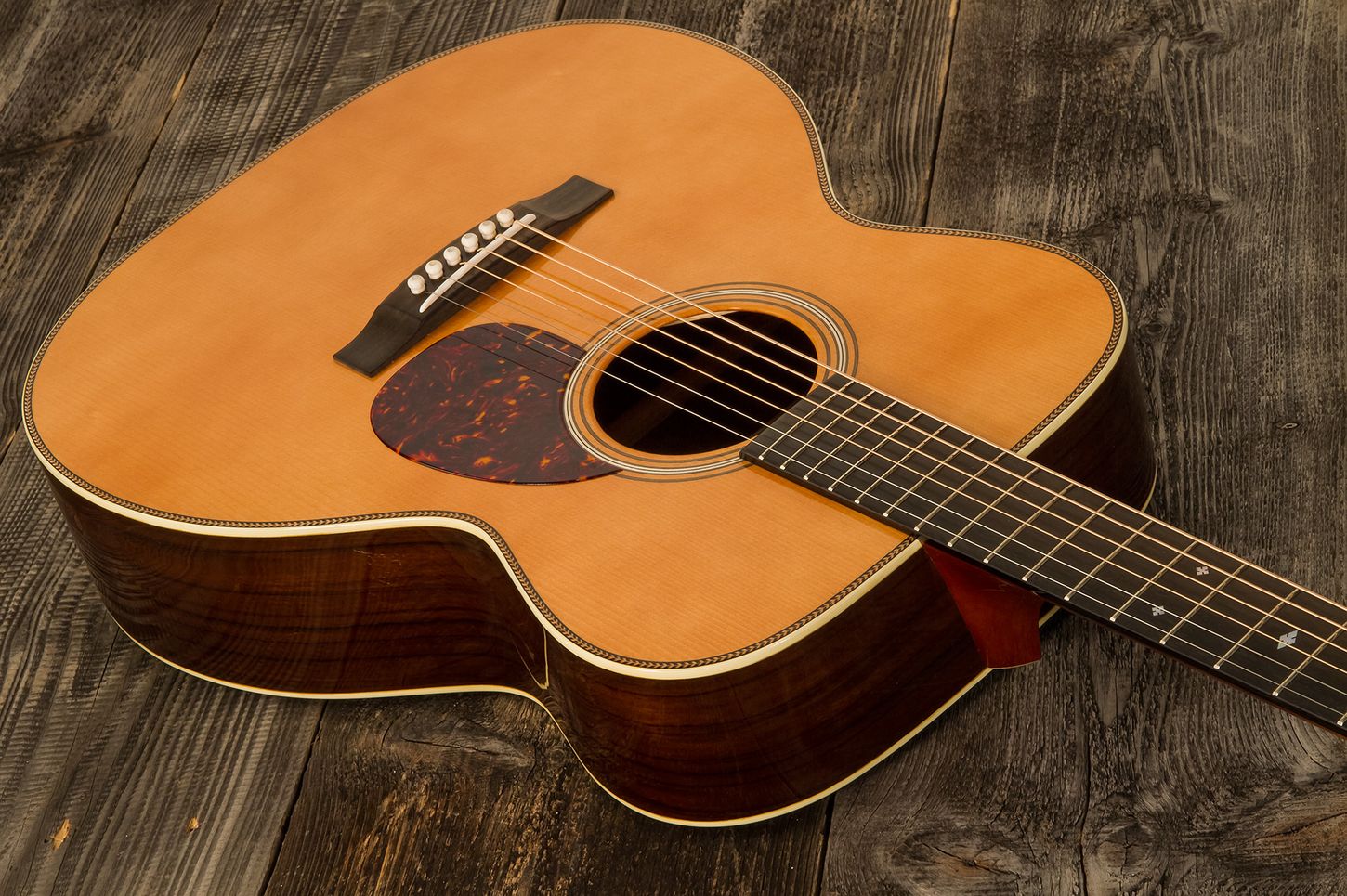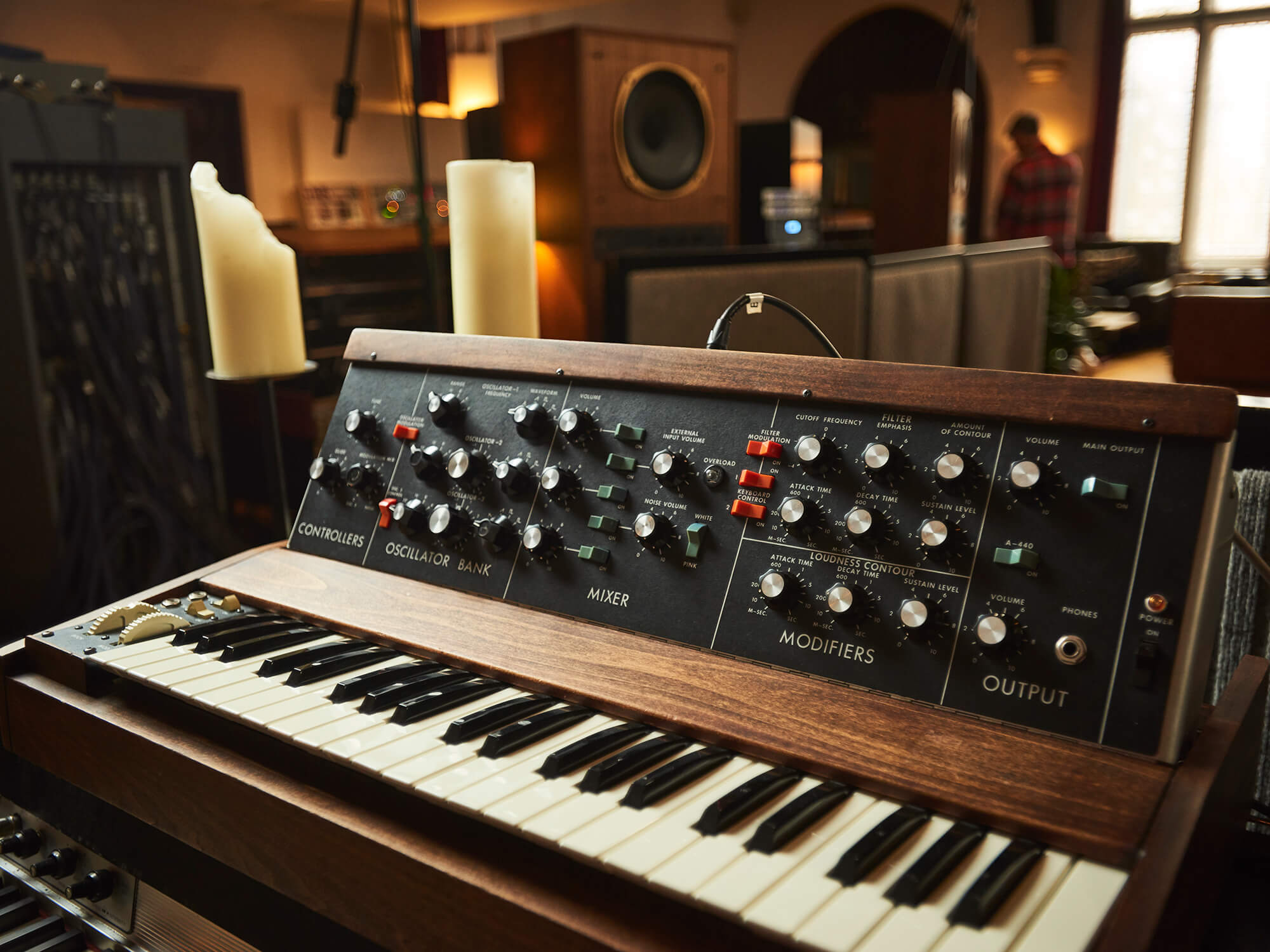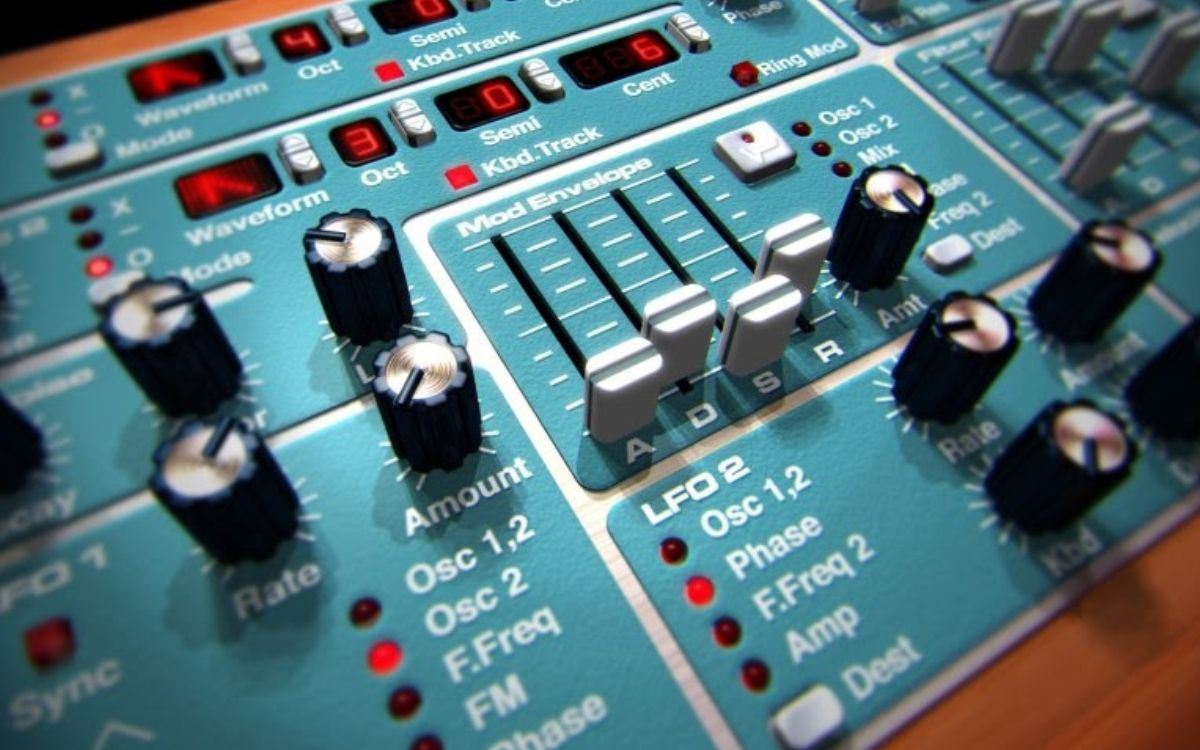Home>Production & Technology>Digital>Why Digital Is Better Than Analog In Music


Digital
Why Digital Is Better Than Analog In Music
Published: March 10, 2024
Discover the advantages of digital music over analog formats and why it's the preferred choice for modern music enthusiasts. Explore the benefits of digital sound quality and convenience.
(Many of the links in this article redirect to a specific reviewed product. Your purchase of these products through affiliate links helps to generate commission for AudioLover.com, at no extra cost. Learn more)
Table of Contents
Introduction
In the ever-evolving realm of music, the debate between digital and analog has been a longstanding topic of discussion. Both formats have their fervent supporters, each touting the unique virtues of their preferred medium. However, as technology continues to advance, the scales are increasingly tipping in favor of digital music. This shift is not merely a matter of trend or preference; rather, it is rooted in the tangible benefits that digital music offers over its analog counterpart.
Digital music, characterized by its reliance on binary code and electronic devices, has revolutionized the way we create, consume, and interact with music. The transition from analog to digital has ushered in a new era of possibilities, fundamentally altering the landscape of the music industry. As we delve into the distinct advantages of digital music, it becomes evident that its superiority lies in its unparalleled clarity and precision, convenience and accessibility, versatility and flexibility, as well as preservation and longevity.
The digital age has empowered musicians, producers, and listeners alike, providing a platform for boundless creativity and innovation. With the ability to capture, manipulate, and reproduce sound with remarkable accuracy, digital music has transcended the limitations of analog technology. This transformation has not only elevated the quality of music production but has also democratized the process, enabling aspiring artists to realize their musical visions with unprecedented ease.
As we embark on an exploration of the myriad advantages of digital music, it becomes apparent that the digital revolution has not only reshaped the way we experience music but has also redefined the very essence of musical expression. By embracing the digital paradigm, we embrace a future where the possibilities are limitless, and the beauty of music is more accessible and captivating than ever before.
Clarity and Precision
In the realm of music, the pursuit of clarity and precision is paramount. Digital music, with its inherently precise nature, has redefined the standards of sonic fidelity. Unlike analog recordings, which are susceptible to imperfections and degradation, digital music offers a pristine and unadulterated representation of sound. This unparalleled clarity is attributed to the digital format's ability to capture and reproduce audio with remarkable accuracy, ensuring that every nuance and subtlety of a musical composition is faithfully preserved.
One of the key factors contributing to the exceptional clarity of digital music is its reliance on high-resolution audio formats. By leveraging advanced sampling rates and bit depths, digital recordings can capture a wider frequency range and dynamic range, resulting in a more faithful reproduction of the original sound. This meticulous attention to detail allows for the preservation of the artist's intended sonic expression, ensuring that the listener experiences the music in its purest form.
Moreover, the precision of digital music extends beyond the recording process and permeates every facet of music production and distribution. Digital audio workstations (DAWs) empower musicians and producers to manipulate and refine sound with surgical precision, enabling them to craft compositions with unparalleled accuracy and intricacy. The ability to seamlessly edit, mix, and master music in the digital domain not only enhances the creative process but also ensures that the final product meets the highest standards of sonic excellence.
Furthermore, the advent of high-fidelity digital audio formats, such as FLAC and DSD, has elevated the listening experience to unprecedented heights. These formats, characterized by their lossless compression and uncompromising audio quality, allow music enthusiasts to immerse themselves in a sonic landscape that is devoid of distortion or degradation. The result is an auditory experience that transcends the limitations of traditional analog playback, delivering a level of clarity and precision that is simply unattainable through analog means.
In essence, the ascendancy of digital music in the realm of clarity and precision has ushered in a new era of sonic fidelity. By harnessing the power of advanced technology and uncompromising standards, digital music has set a new benchmark for audio quality, ensuring that every note, every chord, and every sonic texture is rendered with unparalleled clarity and precision.
Convenience and Accessibility
In the digital age, convenience and accessibility have become defining attributes of the music listening experience. Digital music has revolutionized the way we engage with our favorite songs, albums, and artists, offering unparalleled convenience and accessibility that transcends the limitations of traditional analog formats.
One of the most compelling aspects of digital music is its inherent accessibility. With the advent of online music streaming platforms and digital storefronts, music enthusiasts can instantly access an extensive catalog of songs from virtually any location with an internet connection. This unprecedented accessibility has liberated music from the confines of physical media, allowing listeners to explore and discover new music with unprecedented ease. Whether at home, on the go, or in transit, digital music empowers individuals to curate personalized playlists, explore diverse genres, and immerse themselves in a world of musical discovery at their fingertips.
Furthermore, the convenience of digital music extends beyond mere access to encompass the seamless integration of music into our daily lives. With the proliferation of digital audio devices, such as smartphones, tablets, and portable music players, individuals can carry their entire music library with them wherever they go. This portability ensures that music is no longer tethered to a specific location or playback device, but rather accompanies us throughout our daily routines, enhancing our experiences and enriching our moments with the perfect soundtrack.
Moreover, the advent of digital music has democratized the process of music consumption, enabling listeners to explore and support independent artists and emerging talents with unprecedented ease. Through digital distribution platforms and social media channels, artists can directly connect with their audience, sharing their music and building a dedicated fan base without the traditional barriers imposed by physical distribution channels.
In essence, the convenience and accessibility of digital music have redefined the way we engage with and experience music. By transcending the limitations of physical media and embracing the boundless possibilities of the digital realm, music has become an integral and seamlessly integrated aspect of our lives, enriching our experiences and fostering a deeper connection with the art form we cherish.
Versatility and Flexibility
In the realm of music, versatility and flexibility are indispensable attributes that empower artists, producers, and listeners to explore new horizons and push the boundaries of creativity. Digital music, with its inherent adaptability and expansive capabilities, has revolutionized the landscape of musical expression, offering a level of versatility and flexibility that transcends the limitations of traditional analog formats.
One of the defining features of digital music is its unparalleled versatility in accommodating a diverse array of musical genres and styles. Whether it's the intricate layers of a symphonic orchestra, the pulsating rhythms of electronic dance music, or the raw energy of rock and roll, digital music provides a canvas upon which artists can seamlessly blend and manipulate sonic elements with unprecedented freedom. This versatility allows musicians to experiment with novel soundscapes, fuse disparate genres, and craft compositions that defy conventional categorization, fostering a culture of innovation and boundary-pushing creativity.
Moreover, the flexibility of digital music extends beyond the realm of composition and production, permeating every facet of the music industry. Digital audio workstations (DAWs) empower artists and producers to manipulate and refine sound with surgical precision, enabling them to craft compositions with unparalleled accuracy and intricacy. The ability to seamlessly edit, mix, and master music in the digital domain not only enhances the creative process but also ensures that the final product meets the highest standards of sonic excellence.
Furthermore, the advent of high-fidelity digital audio formats, such as FLAC and DSD, has elevated the listening experience to unprecedented heights. These formats, characterized by their lossless compression and uncompromising audio quality, allow music enthusiasts to immerse themselves in a sonic landscape that is devoid of distortion or degradation. The result is an auditory experience that transcends the limitations of traditional analog playback, delivering a level of clarity and precision that is simply unattainable through analog means.
In essence, the ascendancy of digital music in the realm of versatility and flexibility has ushered in a new era of sonic fidelity. By harnessing the power of advanced technology and uncompromising standards, digital music has set a new benchmark for audio quality, ensuring that every note, every chord, and every sonic texture is rendered with unparalleled clarity and precision.
Preservation and Longevity
In the realm of music, preservation and longevity are paramount considerations that shape the legacy of musical compositions and recordings. Digital music, with its inherent capacity for preservation and enduring longevity, has emerged as a transformative force, safeguarding musical heritage and ensuring that artistic expressions endure across generations.
One of the most compelling attributes of digital music lies in its ability to preserve musical compositions with remarkable fidelity and resilience. Unlike analog recordings, which are susceptible to degradation and wear over time, digital music is immune to the ravages of physical deterioration. By encoding audio in a digital format, music is effectively insulated from the detrimental effects of environmental factors, ensuring that the original sonic integrity remains intact for years to come.
Furthermore, the advent of digital archiving and preservation initiatives has facilitated the safeguarding of musical heritage on an unprecedented scale. Museums, libraries, and cultural institutions have embraced digital preservation as a means of conserving rare and historically significant recordings, thereby ensuring that these invaluable musical artifacts are safeguarded for future generations to appreciate and study.
Moreover, the longevity of digital music extends beyond preservation to encompass the seamless dissemination and accessibility of musical works. Through digital distribution platforms and online archives, artists and record labels can perpetuate their musical catalog with unparalleled ease, ensuring that their creations remain accessible to audiences worldwide in perpetuity.
Additionally, the advent of cloud-based storage and streaming services has further solidified the enduring longevity of digital music. By leveraging cloud infrastructure, music enthusiasts can access vast libraries of digital recordings from any internet-enabled device, transcending the limitations of physical media and ensuring that music remains an enduring and omnipresent aspect of our cultural tapestry.
In essence, the ascendancy of digital music in the realm of preservation and longevity has redefined the trajectory of musical heritage, ensuring that the artistic expressions of today are safeguarded for the enjoyment and enrichment of future generations. By embracing the digital paradigm, we not only preserve the beauty and diversity of musical compositions but also ensure that the timeless allure of music transcends the boundaries of time and space, resonating with audiences for generations to come.
Conclusion
In conclusion, the ascendancy of digital music represents a transformative paradigm shift that has redefined the landscape of musical expression and consumption. The unparalleled clarity and precision offered by digital music have elevated the standards of sonic fidelity, ensuring that every note and nuance of a musical composition is faithfully preserved and reproduced with remarkable accuracy. This precision has not only revolutionized the process of music production but has also enriched the listening experience, allowing music enthusiasts to immerse themselves in a sonic tapestry that is devoid of imperfections and limitations.
Furthermore, the convenience and accessibility of digital music have democratized the process of music consumption, liberating music from the confines of physical media and empowering listeners to explore and discover new musical horizons with unprecedented ease. The seamless integration of digital music into our daily lives has enriched our experiences and fostered a deeper connection with the art form we cherish, ensuring that music remains an omnipresent and enriching aspect of our cultural tapestry.
Moreover, the versatility and flexibility of digital music have empowered artists and producers to push the boundaries of creativity, fostering a culture of innovation and experimentation that transcends traditional genre classifications. The boundless possibilities offered by digital music have catalyzed a renaissance of musical expression, enabling artists to craft compositions that defy convention and resonate with audiences on a profound and emotive level.
Finally, the enduring longevity and preservation afforded by digital music have safeguarded musical heritage on an unprecedented scale, ensuring that the artistic expressions of today endure across generations. By embracing the digital paradigm, we not only preserve the beauty and diversity of musical compositions but also ensure that the timeless allure of music transcends the boundaries of time and space, resonating with audiences for generations to come.
In essence, the digital revolution has not only reshaped the way we experience music but has also redefined the very essence of musical expression. By embracing the digital paradigm, we embrace a future where the possibilities are limitless, and the beauty of music is more accessible and captivating than ever before. As we continue to traverse the digital frontier, the transformative power of digital music will continue to inspire, captivate, and enrich our lives, ensuring that the universal language of music resonates with boundless clarity and enduring resonance.











